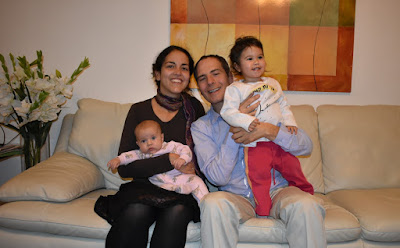Exodus: Chapter 2
5. And the daughter of Pharaoh came down to bathe in the river [...]
6. And she opened it [the ark], and saw it, the child; and behold a boy that
wept. And she had compassion on him […]
10. And the child grew, and she [Miriam] brought him unto
Pharaoh's daughter, and he became her son.
Why was Pharaoh’s daughter so moved at the very sight of baby Moses
floating down the Nile in the ark (teva)? So much so that it drew her
to save him and even to take him to be her own son? Was it mere pity?
The text tells us that Moses was crying and that she had compassion on him.
Is that the whole story? Maybe not…
|
|
The Hebrew text provides a clue.
The text says:
” וַתִּרְאֵהוּ אֶת-הַיֶּלֶד”
“She [Pharaoh’s daughter] saw him; the boy.”
Why doesn’t the text simply say,
“She saw the boy”? Rather the text reads:
“She saw him; the boy” [et hayeled].
How can this be explained and
what does it tell us about what enticed
Pharaoh’s daughter to “draw little Moses
out of the water”?
|
The Kli Yakar (Rabbi Shlomo Efraim ben Aharon of Lunshits; 1550-1619) asks
this very question! “Why does the text add the seemingly
superfluous ‘She saw him’?” Reb Shlomo answers his own question;
and I quote: “Our Sages say that she saw the Divine Presence [the Shechinah]
with him!”
(reading the word et as “with”). He goes on to say something quite incredible:
“She sees it/him” actually refers back to Moses’ birth at the beginning
of the chapter, at which point the text says that Moses’ mother Yocheved
“Bore a son, she saw him, and he was good” [כִּי-טוֹב הוּא] (Exodus 2:1).
The verse alludes to the following verse from Bereishit (Genesis 1:5)
narrating the story of the creation of the world:
וַיַּרְא אֱלֹהִים אֶת-הָאוֹר, כִּי-טוֹב!
“And God saw the light and it was good.” Compare these two verses:
בראשית א: וַיַּרְא אֱלֹהִים אֶת-הָאוֹר, כִּי-טוֹב!
And God saw the light and it was good. (Genesis 1:5)
שמות ב: וַתִּרְאֵהוּ אֶת-הַיֶּלֶד…
And she (Pharaoh’s daughter) saw IT (the light) with (et) the boy. (Exodus 2:1)
In other words, Pharaoh’s daughter saw it (indicated by the letter vav at the end
of the first word in Shemot chapter 2).
What is the it that she saw? It wasn’t the boy, but the divine light (Shechinah)
beaming from baby Moses’ countenance! The Kli Yakar concludes:
“[and] because of the light, he [Moses] appeared as an older child,
for the light and the child were joined together.”
This explanation comes to elucidate why the princess went against
her father’s decree to cast all Israelite baby boys into the Nile,
and compassionately saved one of them by drawing him out of the Nile!
Not only did she save Moses’ life, but she also resolved to bring him up as
her own son.
This teaching also sheds light on our own experience; on something
we may sometimes intuit but perhaps do not speak about out loud.
What am I referring to?
Think back to when you first looked into your little baby’s eyes and saw
their radiant face (if not your own, perhaps another close to you).
Weren’t you filled with a sense of awe, or as Abraham Joshua Heschel,
a prominent twentieth-century Conservative thinker, terms it –
“radical amazement” Wasn’t it as if a “light” radiated from the very essence
of this little miracle’s being? We may even sense, as Pharaoh’s daughter
did, that the child looks older, perhaps wiser. This is certainly how Merav
and I have felt many times while looking into the eyes of our daughters,
Tiferet Tehilla and Maayan Tekhelet literally moving us to tears.
This light doesn’t only sparkle in little babies’ eyes; this light is still burning
in each and every one of us. That said, I believe that some of us come
to a point when we try to conceal that light. It is that innocence, that
manifestation of the divine presence within us, that we feel we must hide.
I believe that we do so both out of fear and out of necessity.
This is, by the way, just how the Torah describes the first three months
of Moses’ life. “She [Yocheved/Moses’ mother] hid him for three months
[out of fear for his life] but once she could no longer conceal him
[or perhaps his divine light], she made a teva (an ark) […] and set him
down on the Nile” (Exodus 2:3).
The light embodied by each and every one of us longs to shine forth.
This is one of the main reasons that we come together in holy community,
because it is precisely within that context that we are empowered to shine
our sacred light; not to be afraid, not to hold back, but be who we really are
in our full radiance. We read that once Pharaoh’s daughter saw the divine
light in the face of a crying boy, she had compassion on him. When we see
the divine light in others, we awaken compassion within ourselves,
seeing our connection to another manifestation of God’s divine light.
Sacred community is, then, compassionate community, a community that
seeks to see the divine light in every individual.
Shabbat Shalom,
Rabbi Yonatan
|
|



Comments
Post a Comment